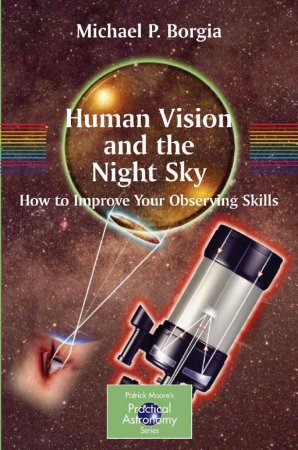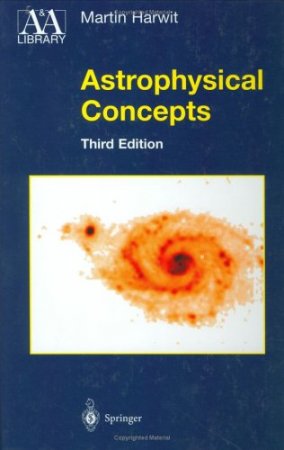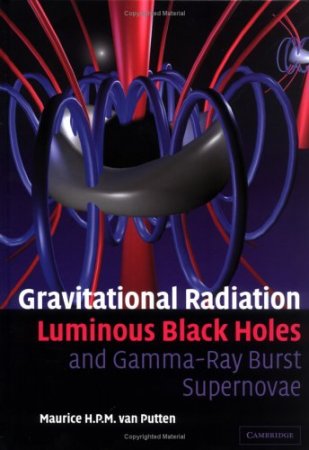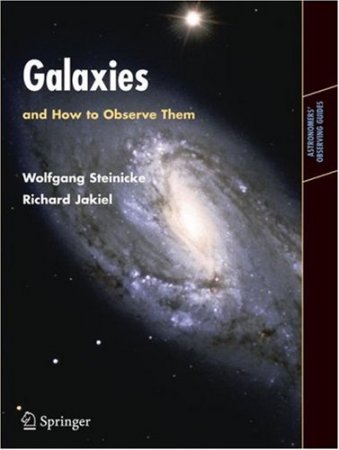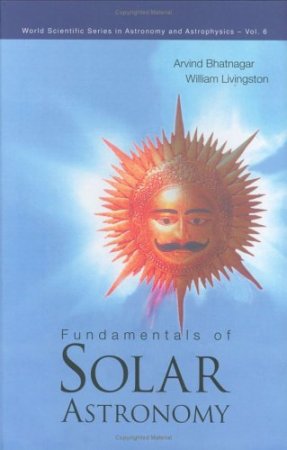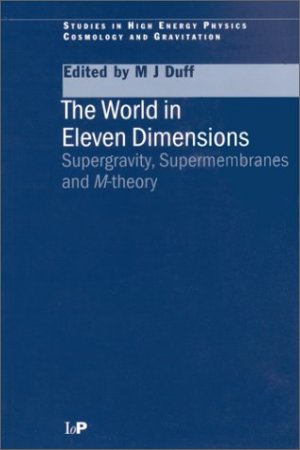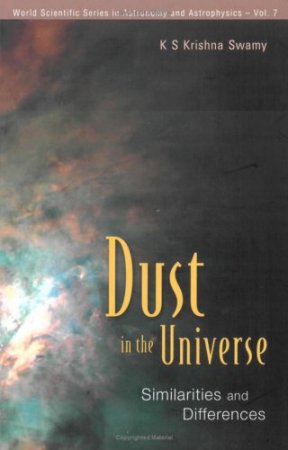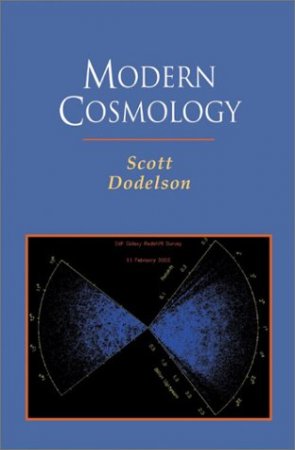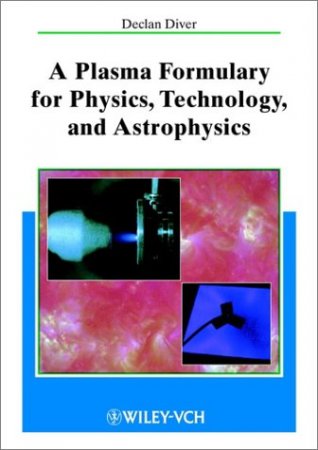НавигацияАрхив новостейСтатистика |
Human Vision and The Night Sky: How to Improve Your Observing SkillsThis book is intended for amateur astronomers who are readers of Sky & Telescope magazine or similar astronomy periodicals – or are at least at the same level of knowledge and enthusiasm. In particular, those of us who have reached a point where enjoyment is fading because the challenges have run out will appreciate it, because it takes such people to the "next level" in observational astronomy. Astrophysical ConceptsThis classic text, aimed at senior undergraduates and beginning graduate students in physics and astronomy, presents a wide range of astrophysical concepts in sufficient depth to give the reader a quantitative understanding of the subject. Emphasizing physical concepts, the book outlines cosmic events but does not portray them in detail: It provides a series of astrophysical sketches. For this third edition, nearly every part of the text has been reconsidered and rewritten; new sections have been added to cover recent developments, and most of the rest has been revised and brought up to date. Gravitational Radiation, Luminous Black Holes and Gamma-Ray Burst SupernovaeBlack holes and gravitational radiation are two of the most dramatic predictions of general relativity. The quest for rotating black holes - discovered by Roy P. Kerr as exact solutions to the Einstein equations - is one of the most exciting challenges currently facing physicists and astronomers. Gravitational Radiation, Luminous Black Holes and Gamma-Ray Burst Supernovae takes the reader through the theory of gravitational radiation and rotating black holes, and the phenomenology of GRB-supernovae. Topics covered include Kerr black holes and the frame-dragging of spacetime, luminous black holes, compact tori around black holes, and black-hole spin interactions. It concludes with a discussion of prospects for gravitational-wave detections of a long-duration burst in gravitational-waves as a method of choice for identifying Kerr black holes in the Universe. This book is ideal for a special topics graduate course on gravitational-wave astronomy and as an introduction to those interested in this contemporary development in physics. Galaxies and How to Observe ThemGalaxies are perhaps the most popular of all visual targets that are sought after by visual observers. At present the only way to get up-to-date information, is to query various (often highly technical) speciality books or digging deeply into the Internet. This can be a time consuming and often frustrating task, as the data aren’t often compatible. This book satisfies the need for a modern, comprehensive review in combining the three major aspects: the physical background on the nature and data of galaxies, the relevant instrumentation and viewing techniques, and finally the targets and their individual appearance in telescopes of various apertures. To illustrate the latter, a comprehensive sample of galaxies, including quasars, groups and clusters of galaxies is presented. This combination of theoretical knowledge and practical information guarantees successful observing sessions. The book could become a standard source on galaxy observing for all kinds of amateur observers, from the beginner to the experienced. Fundamentals of Solar AstronomyThere are several textbooks available on solar astronomy which deal with advanced astrophysical aspects of solar physics, and books which provide very elementary knowledge about the Sun. This book will help to bridge the gap. It aims to stimulate interest in solar astronomy, presenting at one place the basic methods and techniques used in the field, together with the latest findings and the excitement in solar physics. As solar astronomy is becoming very popular among amateur astronomers and laymen, the book provides the practical knowledge to build simple solar telescopes and other equipment for making solar observations. Amateur astronomers have made important contributions to solar astronomy, and this book will help to guide them in their endeavours. The book can also serve as a text for undergraduate and graduate students starting out on solar physics. Using it, graduate students can easily embark on specific topics of research in solar astronomy. The World in Eleven Dimensions: Supergravity, supermembranes and M-theoryA unified theory embracing all physical phenomena is a major goal of theoretical physics. In the early 1980s, many physicists looked to eleven-dimensional supergravity in the hope that it might provide that elusive superunified theory. In 1984 supergravity was knocked off its pedestal by ten-dimensional superstrings, one-dimensional objects whose vibrational modes represent the elementary particles. Superstrings provided a perturbative finite theory of gravity which, after compactification to four spacetime dimensions, seemed in principle capable of explaining the Standard Model. Despite these major successes, however, nagging doubts persisted about superstrings. Then in 1987 and 1992 the elementary supermembrane and its dual partner, the solitonic superfivebrane, were discovered. These are supersymmetric extended objects with respectively two and five dimensions moving in an eleven-dimensional spacetime. Over the period since 1996, perturbative superstrings have been superseded by a new nonperturbative called M-theory, which describes supermembranes and superfivebranes, subsumes string theories, and has as its low-energy limit, eleven-dimensional supergravity. M-theory represents the most exciting development in the subject since 1984 when the superstring revolution first burst on the scene. The first book devoted to M-theory, The World in Eleven Dimensions: Supergravity, Supermembranes and M-Theory brings together seminal papers that have shaped our current understanding of this eleven-dimensional world, from supergravity through supermembranes to M-theory. Each chapter includes commentaries intended to explain the importance of these papers and to place them in a wider perspective. Each chapter also has an extensive bibliography. The book is of interest to researchers and postgraduate students in particle physics, mathematical physics, gravitation, and cosmology. Ecological Orbits: How Planets Move and Populations GrowA famous ecologist offers a fresh new approach to population biology and ecology. Challenging the traditionally accepted Lotka-Volterra model, which is based on predator-prey interactions, this new model emphasizes maternal effects, specifically the significance of a mother's interest in the success of her female offspring. Dust in the Universe: Similarities And DifferencesThe comprehensive study presented in this book provides a much needed critical analysis of different types of dust in the universe. The information derived from presolar grains from comets, meteorites and interplanetary dust particles as well as the relevant laboratory studies are discussed. This should help in our goal of understanding the evolution of dust with cosmic time. Modern CosmologyModern Cosmology begins with an introduction to the smooth, homogeneous universe described by a Friedman-Robertson-Walker metric, including careful treatments of dark energy, big bang nucleosynthesis, recombination, and dark matter. From this starting point, the reader is introduced to perturbations about an FRW universe: their evolution with the Einstein-Boltzmann equations, their generation by primordial inflation, and their observational consequences. These consequences include the anisotropy spectrum of the cosmic microwave background (CMB) featuring acoustic peaks and polarization, the matter power spectrum with baryonic wiggles, and their detection via photometric galaxy surveys, redshift distortions, cluster abundances, and weak lensing. The book concludes with a long chapter on data analysis. Plasma Formulary for Physics, Technology and AstrophysicsPlasma physics has matured rapidly as a discipline, and now touches on many different research areas, including manufacturing processes. This collection of fundamental formulae and definitions in plasma physics is vital to anyone with an interest in plasmas or ionized gases, whether in physics, astronomy or engineering. Both theorists and experimentalists will find this book useful, as it incorporates the latest results and findings. The text treats astrophysical plasmas, fusion plasmas, industrial plasmas and low temperature plasmas as aspects of the same discipline - a unique approach made possible by the abbreviated nature of a formulary. |
ПопулярноеКалендарь
ОпросОцените дизайн сайта
Немного рекламы |
|||||||||||||||||||||||||||||||||||||||||||||||||
